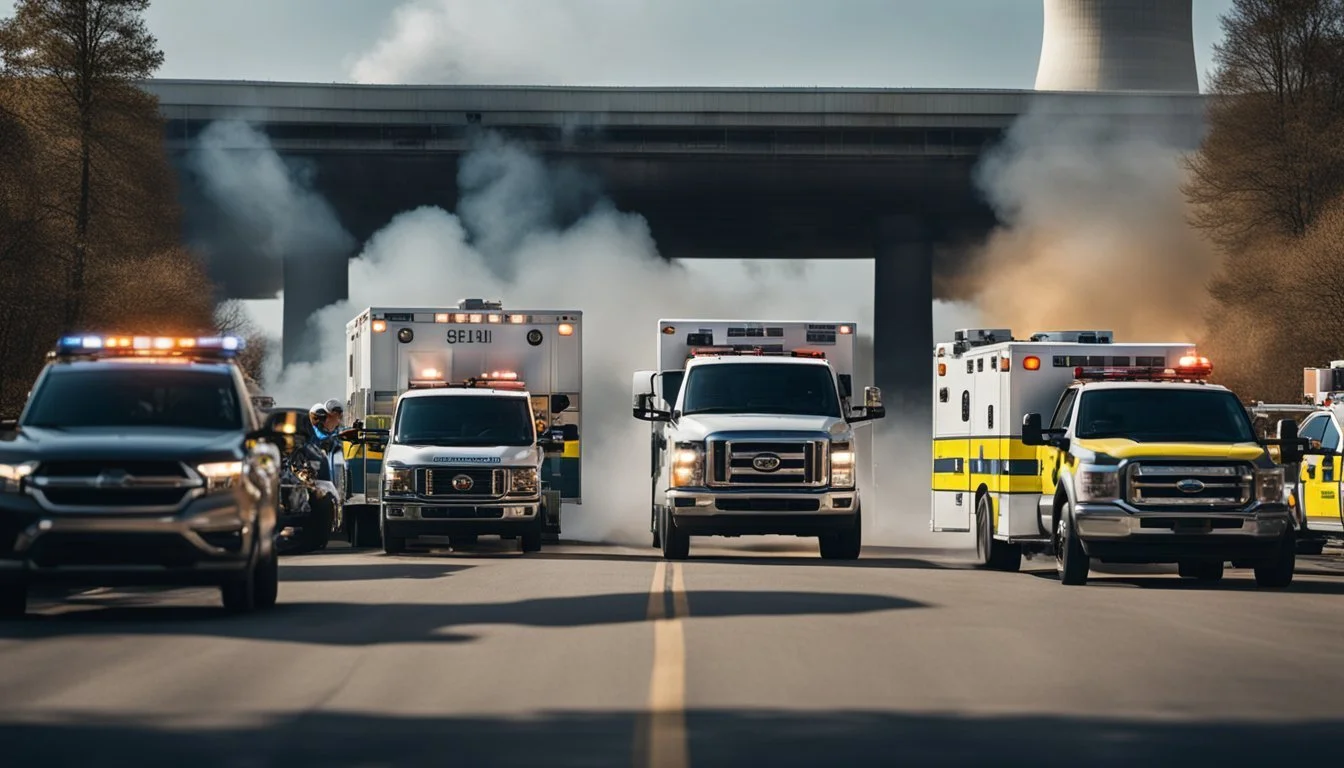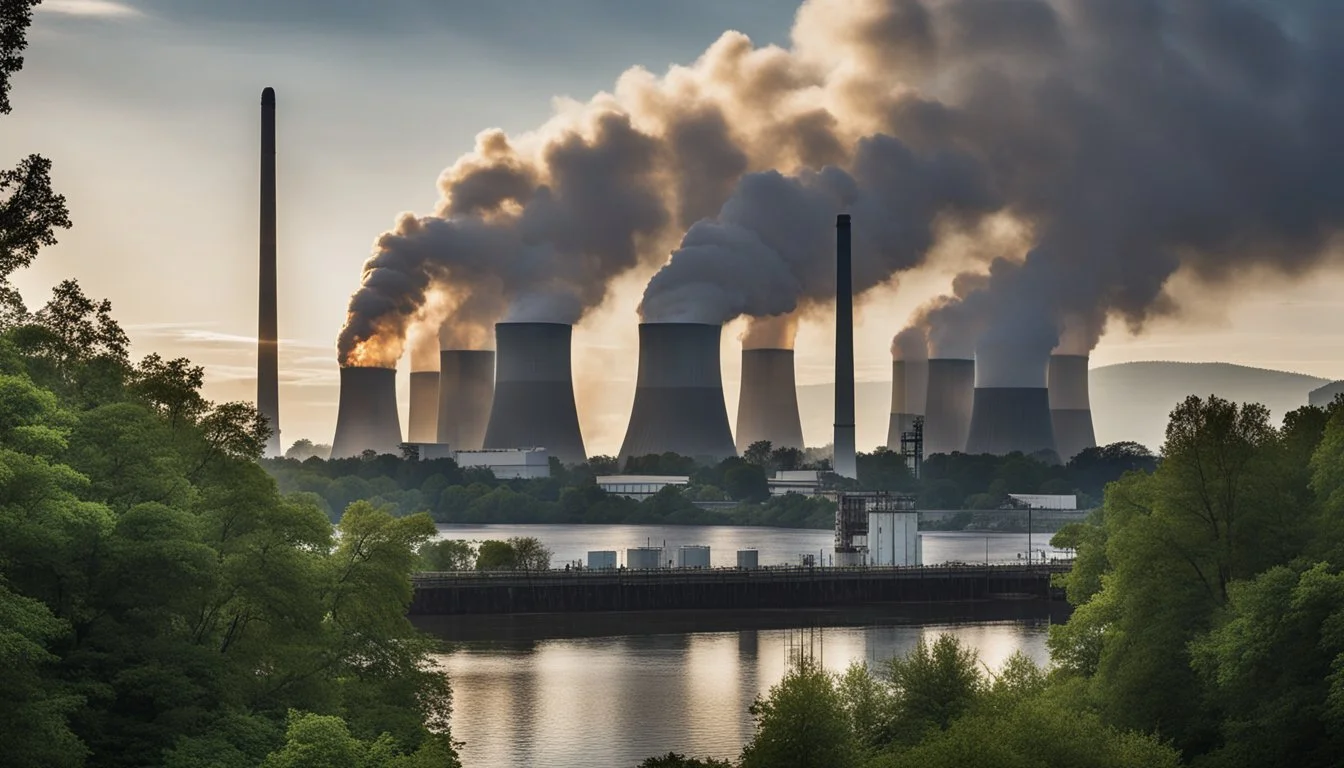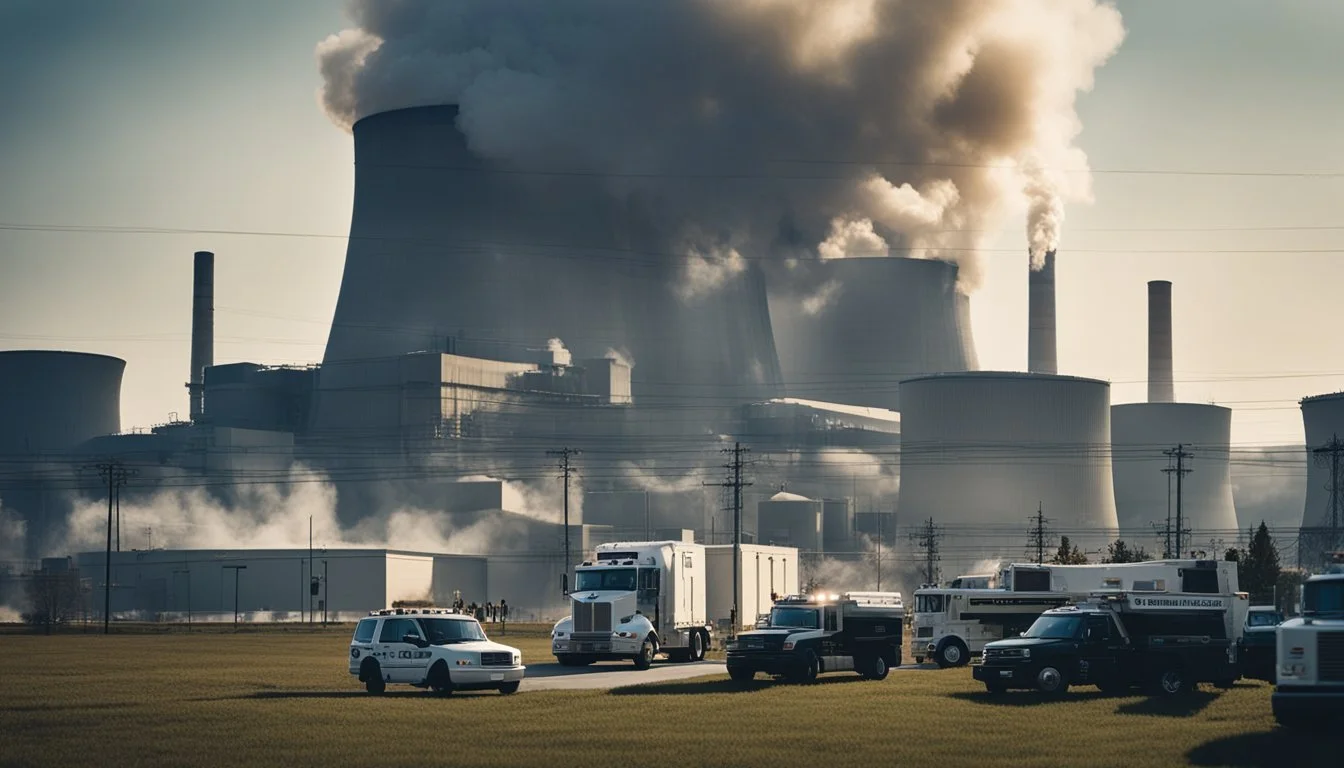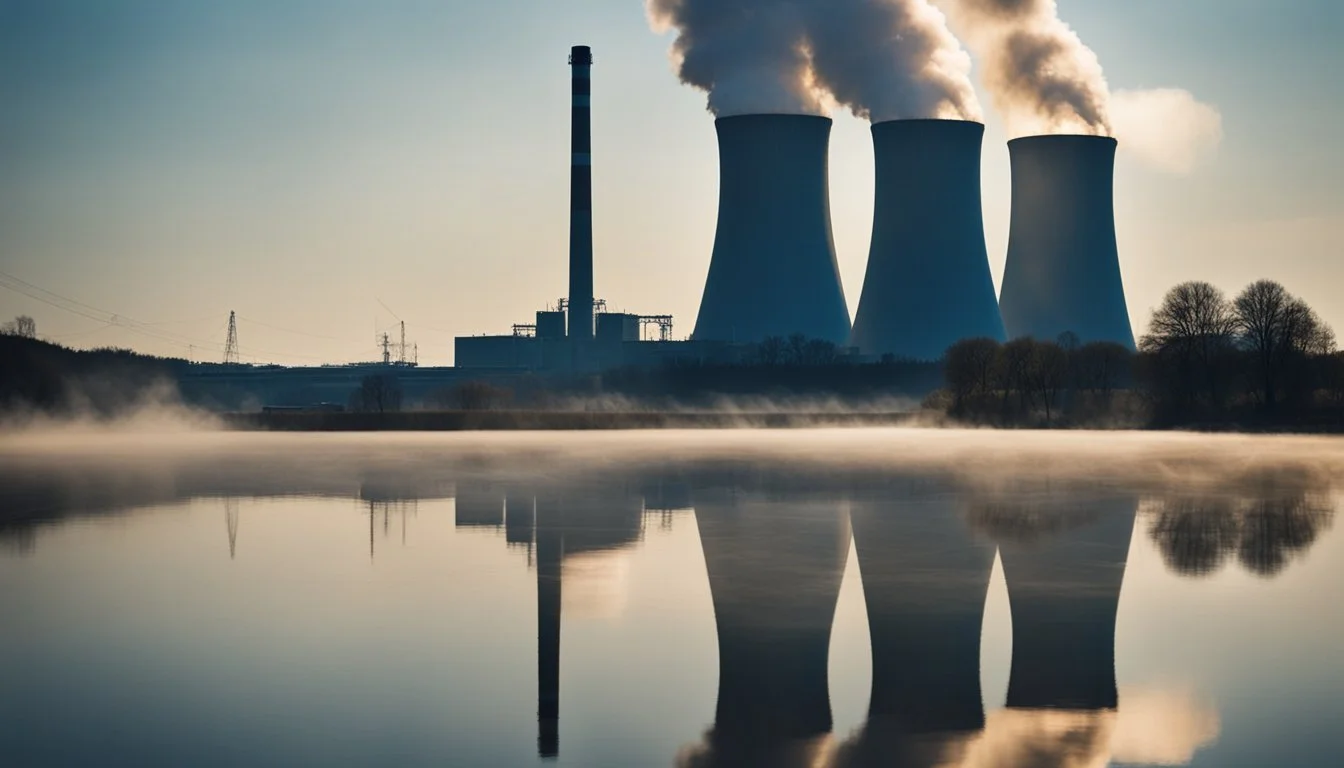Media Aftermath of Three Mile Island Accident Exposes Disaster Reporting Challenges
The Three Mile Island accident of 1979 marked a pivotal moment in the history of nuclear power and disaster reporting. On March 28, a partial meltdown occurred at the nuclear power plant near Middletown, Pennsylvania, triggering widespread concern and media attention. The incident exposed shortcomings in both nuclear safety protocols and the ability of officials to communicate effectively during a crisis.
Initial reports of the accident were chaotic and often contradictory, leaving the public confused and fearful. Journalists struggled to obtain accurate information as plant operators and government officials grappled with the unfolding situation. The lack of transparency and conflicting statements from authorities fueled speculation and conspiracy theories.
This event highlighted the challenges of reporting on complex technological disasters and the potential for misinformation to spread rapidly. It also raised questions about the nuclear industry's transparency and the government's ability to manage public safety during emergencies. The Three Mile Island accident ultimately led to significant changes in nuclear safety regulations and crisis communication strategies.
Historical Context of the Three Mile Island Accident
The Three Mile Island accident of 1979 marked a turning point for nuclear energy in the United States. It exposed regulatory gaps, safety concerns, and public mistrust that would reshape the industry for decades to come.
Understanding Nuclear Power and Regulations
Nuclear power emerged as a promising energy source in the mid-20th century. The U.S. government established the Atomic Energy Commission (AEC) in 1946 to oversee nuclear development. By the 1970s, nuclear plants were expanding rapidly across the country.
The AEC faced criticism for conflicts of interest in promoting and regulating nuclear power. This led to its split in 1974 into the Nuclear Regulatory Commission (NRC) and the Energy Research and Development Administration.
Despite new oversight, safety concerns persisted. Critics argued regulations were inadequate and emergency planning insufficient. These issues would come to the forefront during the Three Mile Island incident.
Key Events Leading up to the Three Mile Island Accident
In the years before Three Mile Island, several incidents raised alarms about nuclear safety:
1975: Browns Ferry fire in Alabama
1976: Greifswald accident in East Germany
1977: Jaslovské Bohunice accident in Czechoslovakia
These events highlighted vulnerabilities in reactor designs and operator training. However, the nuclear industry maintained that a major accident was highly unlikely in the U.S.
The Three Mile Island plant began operations in 1974. Unit 2, where the accident occurred, came online in December 1978 - just months before the incident.
The 1980s: A Decade of Nuclear Awakening
The Three Mile Island accident ushered in a new era for nuclear power. Key developments included:
Stricter regulations and safety protocols
Enhanced operator training programs
Improved emergency response planning
Increased public scrutiny and opposition to nuclear expansion
No new nuclear plants were ordered in the U.S. after 1978. Existing projects faced delays and cost overruns due to heightened safety requirements.
The 1986 Chernobyl disaster in the Soviet Union further eroded public confidence in nuclear energy. It reinforced concerns about the potential catastrophic consequences of nuclear accidents.
By the end of the 1980s, the U.S. nuclear industry was in decline. The focus shifted to maintaining existing plants rather than building new ones.
Chronological Breakdown of the Accident
The Three Mile Island accident unfolded through a series of critical events, from initial system failures to the partial meltdown and subsequent evacuation efforts.
Initial Failures in the Cooling System
On March 28, 1979, at 4:00 AM, a non-nuclear secondary system malfunction occurred at Three Mile Island Unit 2. A stuck valve caused the main feedwater pumps to stop running, halting the steam generators from removing heat. The turbine-generator and reactor automatically shut down, but pressure in the reactor coolant system began to increase. A relief valve opened to manage the pressure but failed to close properly.
Control room instruments incorrectly indicated the valve had closed, leading operators to believe the system was functioning normally. Cooling water continued to escape through the stuck valve. As water and steam escaped, coolant flow through the core decreased, causing fuel rod temperatures to rise.
The Meltdown of the Reactor Core
As the situation deteriorated, the exposed reactor core began to overheat. By 6:00 AM, operators were struggling to understand the conflicting information from their instruments. They reduced the flow of emergency cooling water, inadvertently worsening the situation.
At 7:50 AM, a site emergency was declared. By early afternoon, evidence of severe fuel damage emerged. Radiation levels in the containment building spiked, and a hydrogen bubble formed in the reactor vessel, raising fears of a potential explosion.
Over the next few days, efforts to cool the reactor core continued. It wasn't until April 27 that the hydrogen bubble was significantly reduced, allowing for the transition to natural circulation cooling.
Evacuation and Immediate Health Effects
On March 30, Pennsylvania Governor Dick Thornburgh advised pregnant women and preschool-age children within a 5-mile radius to evacuate. This recommendation led to the displacement of 140,000 people.
Despite fears of widespread radiation exposure, studies showed that the average radiation dose to people living within 10 miles of the plant was about 1 millirem - equivalent to a chest X-ray. No immediate deaths, injuries, or significant health effects were reported among plant workers or the nearby residents.
Long-term studies have found no conclusive evidence of increased cancer rates in the affected population. However, the accident had profound psychological impacts on local communities and significantly influenced public perception of nuclear energy safety.
Assessing the Health and Environmental Impact
The Three Mile Island accident sparked concerns about radiation exposure and ecological damage. Studies have examined both short-term and long-term effects on human health and the surrounding environment.
Long-term Effects on Local Populations
Multiple health studies found no significant increases in cancer rates or deaths among residents near Three Mile Island. The Pennsylvania Department of Health conducted eight studies over a decade, revealing no evidence of elevated infant mortality or cancer incidence in nearby populations.
Radiation releases during the accident were limited. Most radioactive material remained contained within the damaged reactor. The average radiation dose to people living within 10 miles was estimated at only 8 millirem - about equal to a chest X-ray.
Some residents reported stress and anxiety following the incident. Psychological effects like these were among the most notable health impacts observed in local communities.
Environmental Damage and Cleanup Efforts
Environmental monitoring detected minimal radioactive contamination beyond the plant site. Soil and water testing found only trace amounts of radioactive materials in the surrounding area.
Cleanup of the damaged reactor began in August 1979 and continued for nearly 15 years. Workers removed fuel and decontaminated buildings and equipment. Approximately 2.23 million gallons of accident-generated radioactive water was processed.
The reactor building was sealed and will be monitored until it can be decommissioned safely along with other plant structures. Long-term environmental surveillance continues to ensure no lasting ecological impacts from the accident.
The Reporting of the Accident
The Three Mile Island accident sparked intense media coverage and public interest. Journalists played a crucial role in informing the public, while documentaries and interviews provided in-depth perspectives on the event.
The Role of Journalists and the News Media
Journalists rushed to the scene of the Three Mile Island accident, working tirelessly to gather information and report on the unfolding events. The news media faced significant challenges in accurately conveying the complex technical details of the nuclear incident.
Reporters struggled to obtain clear information from plant officials and government authorities. This led to some confusion and conflicting reports in the early stages of the accident.
Television news played a particularly important role, with networks providing round-the-clock coverage. Walter Cronkite's reporting on CBS Evening News helped millions of Americans understand the gravity of the situation.
Print journalists also contributed valuable in-depth analysis and investigative reporting in the days and weeks following the accident.
Women Reporters and the Feminist Perspective
Female journalists brought unique perspectives to the Three Mile Island accident coverage. They often focused on the human impact of the disaster, particularly on families and communities near the plant.
Several women reporters highlighted the concerns of local residents, especially mothers worried about their children's health. This approach provided a more personal and relatable angle to the technical aspects of the accident.
Feminist journalists drew attention to gender-related issues surrounding nuclear power and environmental safety. They questioned whether male-dominated industries adequately considered the long-term effects on families and future generations.
Some female reporters faced challenges in gaining access to official sources, reflecting broader gender biases in the journalism field at the time.
The Importance of Documentaries and Interviews
Documentaries played a crucial role in providing comprehensive, long-form coverage of the Three Mile Island accident. These films offered in-depth analysis and historical context that went beyond daily news reports.
Filmmakers interviewed a wide range of individuals, including plant workers, local residents, government officials, and nuclear experts. These firsthand accounts provided valuable insights into the accident and its aftermath.
Documentaries like "Meltdown at Three Mile Island" (1999) and "The Island" (2009) explored the long-term environmental and health impacts of the accident.
Heidi Hutner's work stood out for its focus on women's perspectives, particularly those of homemakers and mothers living near the plant. Her interviews revealed the emotional toll and lingering fears experienced by local communities.
Analysing Cover-ups and the Search for Truth
The Three Mile Island accident sparked intense scrutiny of nuclear industry practices and government oversight. Investigations uncovered concealed information, raising questions about transparency and public safety.
Investigations into Concealed Information
Plant operators initially downplayed the severity of the accident. They failed to promptly report critical details to authorities and the public. Internal documents later revealed that officials knew more than they disclosed.
An independent commission found evidence of deliberate attempts to minimize the incident's impact. Whistleblowers came forward with allegations of falsified safety records and ignored warnings.
The Department of Energy launched a comprehensive inquiry. It uncovered systemic failures in emergency protocols and communication procedures.
The Role of the Nuclear Regulatory Commission
The Nuclear Regulatory Commission (NRC) faced criticism for its handling of the crisis. Critics accused the agency of being too closely aligned with the industry it was meant to regulate.
The NRC's initial response was slow and disorganized. It struggled to gather accurate information and provide clear guidance to local officials.
Subsequent reforms aimed to strengthen the NRC's oversight capabilities. New regulations mandated improved safety measures and more frequent inspections.
The agency implemented stricter reporting requirements for nuclear facilities. It also expanded its emergency response protocols.
Public Perception and the Supreme Court's Involvement
Public trust in nuclear energy plummeted after Three Mile Island. Anti-nuclear activists gained traction, organizing large-scale protests and lobbying for policy changes.
The Supreme Court became involved in 1980. It ruled on a case regarding the restart of Three Mile Island's undamaged reactor.
The Court's decision upheld the NRC's authority to consider psychological stress in its safety assessments. This landmark ruling expanded the scope of nuclear regulation.
Media coverage played a crucial role in shaping public opinion. Conflicting reports and technical jargon contributed to widespread confusion and fear.
Cultural and Societal Responses
The Three Mile Island accident profoundly impacted public perception of nuclear energy and sparked widespread cultural reactions. It fueled activism, shaped popular media, and left lasting impressions on society's views of nuclear power.
Nuclear Energy in Popular Culture
The China Syndrome, a film released just 12 days before the Three Mile Island incident, eerily mirrored real events. Its plot, centered on safety cover-ups at a nuclear plant, gained unexpected relevance. The movie's success highlighted growing public anxiety about nuclear power.
Popular music also reflected these concerns. Artists like Jackson Browne and Bruce Springsteen incorporated anti-nuclear themes into their songs. Comics and literature began featuring more nuclear-related storylines, often with dystopian overtones.
Television shows and documentaries explored the risks of nuclear energy. They frequently referenced Three Mile Island as a cautionary tale, reinforcing public unease about nuclear technology.
Activism and the Anti-Nuclear Movement
The Three Mile Island accident galvanized the anti-nuclear movement. Protests and rallies surged across the United States, with activists demanding stricter regulations and plant closures.
Notable figures like Jane Fonda became vocal opponents of nuclear energy. Fonda, who starred in The China Syndrome, used her platform to raise awareness about nuclear risks.
Environmental groups gained traction, linking nuclear concerns to broader ecological issues. They organized teach-ins, petition drives, and civil disobedience actions at nuclear facilities.
The accident also spurred the formation of new grassroots organizations dedicated to opposing nuclear power. These groups worked to educate the public and lobby for policy changes.
Legacies and Representations in Media
Three Mile Island became a symbol of nuclear danger in media portrayals. News outlets often used it as a reference point when discussing nuclear safety issues.
Documentaries like "Atomic States of America" examined the long-term impacts of the accident on local communities. They highlighted ongoing health concerns and environmental effects.
The incident entered the cultural lexicon, with "meltdown" becoming a widely used metaphor for catastrophic failure. It appeared in contexts far removed from nuclear energy.
Comparisons to other nuclear disasters, particularly Chernobyl and later Fukushima, frequently invoked Three Mile Island. These narratives reinforced the accident's place in the public consciousness as a pivotal moment in nuclear history.
Future Implications and Industry Learnings
The Three Mile Island accident prompted significant changes in nuclear safety practices and public perception of nuclear energy. These developments have shaped the industry's trajectory and influenced global energy policies.
Advancements in Nuclear Reactor Safety
Nuclear reactor safety has seen major improvements since Three Mile Island. Enhanced control room designs now provide operators with clearer information displays and more intuitive interfaces. Automated safety systems have been implemented to reduce human error risks.
Regular safety drills and simulations are now standard practice. These exercises help operators prepare for various emergency scenarios. Plant personnel undergo rigorous training programs to ensure they can handle complex situations effectively.
New reactor designs incorporate passive safety features. These systems can automatically shut down and cool reactors without human intervention or external power. Such innovations aim to prevent accidents even in extreme circumstances.
Energy Policy and the Role of Nuclear Energy
The Three Mile Island incident sparked debates about nuclear energy's place in national energy strategies. Some countries scaled back nuclear programs, while others continued development with stricter regulations.
Nuclear energy remains a low-carbon option for baseload power generation. As climate change concerns grow, some policymakers view it as a potential tool for reducing greenhouse gas emissions.
Public opinion on nuclear energy varies widely. Safety concerns persist, but some see it as necessary for meeting energy demands while combating climate change. Balancing these factors shapes energy policies worldwide.
Educational Value and Knowledge Sharing
The Three Mile Island accident became a case study for improving nuclear safety education. Engineering curricula now emphasize human factors and crisis management alongside technical knowledge.
Industry organizations facilitate knowledge sharing among nuclear operators globally. Best practices and lessons learned are disseminated to prevent similar incidents.
Public outreach programs aim to educate communities about nuclear energy and safety measures. Transparent communication helps address concerns and build trust between nuclear facilities and local populations.
Museums and educational centers dedicated to nuclear history offer insights into past events and technological progress. These institutions play a role in fostering informed public discourse on nuclear energy.
Conclusion
The Three Mile Island accident marked a pivotal moment in nuclear energy history and disaster reporting. Media coverage played a crucial role in shaping public perception and response to the event.
Initial reports struggled with conflicting information and technical complexities. This led to some sensationalism and misrepresentation of the true risks.
As more facts emerged, reporting became more accurate but public trust had already been damaged. The incident highlighted the challenges of communicating complex scientific information during an unfolding crisis.
The aftermath saw increased scrutiny of nuclear safety and major reforms in the industry. Improved emergency planning and public communication protocols were implemented at nuclear facilities nationwide.
While no cover-up occurred, confusion and poor communication fueled public fears. This underscored the importance of transparency and clear messaging from officials during disasters.
The Three Mile Island accident reshaped nuclear policy, safety standards, and crisis communication practices. Its legacy continues to influence disaster reporting and emergency response protocols today.




